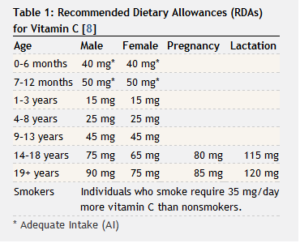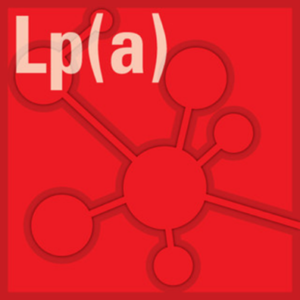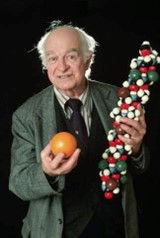THE PAULING THERAPY – IS IT A “CURE” FOR HEART DISEASE?
The Missing Enzyme
https://towerlaboratories.com/pauling_therapy.html
According to Linus Pauling and others, the condition that doctors euphemistically label as “coronary heart disease” is not a disease at all. Rather, it is a symptom of an enzyme missing in humans that is needed to make ascorbic acid (vitamin C) from glucose in the liver – the enzyme gulonolactone oxidase, or GLO.
Because humans cannot make vitamin C in the liver like most animals, they require high levels of ascorbic acid in the diet in order to manufacture the vast amounts of collagen required for the maintenance of blood vessels, bones, disks, organs, skin, ligaments, cartilage, tendons, and teeth. The coronary arteries typically suffer the scorbutic (scurvy) effect from the lack of vitamin C and collagen and begin to deteriorate first because they are subject to the greatest degree of mechanical stress from the pumping action of the beating heart.
Without collagen, the ground substance (intima) of the blood vessels becomes weak and watery, which in turn allows lipoprotein(a) cholesterol to penetrate the tissue to “patch” the blood vessels so that they do not rupture and kill you much sooner than a heart attack would.
This patching mechanism occurs because lipoprotein(a) fat (a subset of LDL fat) is naturally attracted to lysine, which naturally is found in an artery wall but only exposed to the fats swooshing by in your blood when the artery is deficient in collagen and thus deteriorating. The process whereby the body utilizes cholesterol in this way in the absence of collagen through vitamin C deficiency is quite miraculous, and despite the bum rap that cholesterol has gotten for years as being the “cause” of heart disease, it is actually a lifesaving response to patch weak arteries.
Of important note, this collagen deficiency (usually associated only with skin) is not manifested only in the cardiovascular system but is actually global, occurring throughout the body in every area that demands collagen for strength and integrity including the vertebral (back) disks, ligaments that hold hips and knees in place, teeth, skin, bones, organs, and even the brain arteries.
A study published in the October 16, 2013 online issue of Neurology®, the medical journal of the American Academy of Neurology, provides overwhelming evidence that dementia and Alzheimer’s patients are known to have pronounced arterial plaquing, which Pauling’s theory conclusively proves is caused by the body’s “patching” of weak brain arteries due to collagen/vitamin C deficiency.
This process is also responsible for the conditions of peripheral vascular disease, carotid artery disease, aneurysm, stroke, and often even erectile dysfunction where the penile arteries have also developed reinforcing plaque. In fact, erectile dysfunction is often an early marker for coronary heart disease in men. Tower Labs continues to receive feedback from users who are experiencing effective relief of erectile dysfunction through the use of Tower’s Pauling therapy products.
The Pauling therapy is not a frank “cure” for this chronic scurvy condition that causes heart attack and a host of other diseases because it does not replace the body’s missing GLO enzyme that allows it to make collagen from vitamin C (the true disease). Rather, Tower’s Pauling therapy formulas replace the nutrient – vitamin C – that other species WITH the enzyme are able to make that prevents them from suffering from coronary heart and cardiovascular diseases.
The Problem – U. S. RDA Causes Arterial Scurvy
The miniscule amount of vitamin C in the U. S. RDA of 90 mg for men and 75 mg for women will prevent death from the vitamin C deficiency disease scurvy but is not nearly sufficient for the body to make enough collagen to maintain the strength and integrity of its entire cardiovascular system as well as bones, cartilage, organs, disks, ligaments, tendons, etc.
The amount of daily vitamin C necessary to treat latent or chronic scurvy, also known as human atherosclerosis, is nearly 100 times higher than the current RDA. No human who consumes the RDA of 90 mg or less is immune to coronary heart and cardiovascular disease. In fact, Pauling’s research concluded that daily intake of no less than 3,000 mg in divided doses throughout the day is required for adequate collagen synthesis and protection from heart disease, and that daily intake of no less than 6,000 mg is required for those with diagnosed heart disease.
Based on the following table it is easy to see why heart disease is the world’s number one killer, statins the number one selling pharmaceutical drug, and cardiology the most lucrative medical industry.

 Even veterinarians recognize this cardiovascular and heart disease threat to guinea pigs, who also lack the GLO enzyme with which to make vitamin C from glucose (and subsequently collagen) and GUINEA PIG FOOD IS FORTIFIED WITH 8 TIMES MORE VITAMIN C THAN WHAT IS RECOMMENDED BY THE FDA FOR HUMANS!
Even veterinarians recognize this cardiovascular and heart disease threat to guinea pigs, who also lack the GLO enzyme with which to make vitamin C from glucose (and subsequently collagen) and GUINEA PIG FOOD IS FORTIFIED WITH 8 TIMES MORE VITAMIN C THAN WHAT IS RECOMMENDED BY THE FDA FOR HUMANS!
Along the same lines, primates also cannot make vitamin C, and despite the abundance of information available about vitamin C and its role in the prevention of cardiovascular disease and heart attacks, zookeepers worldwide are still shocked and bewildered when gorillas and other primates suddenly drop dead from fatal heart attacks, resulting from low levels of collagen because of inadequate ascorbic acid intake in their daily diet. As with humans, small amounts of vitamin C protect them from scurvy, though without very high intake daily they are not protected from cardiovascular deterioration or blockages.
The Discovery – Lipoprotein (a) Cholesterol
Lipoprotein (a), (Lp(a)), discovered in 1963, is a low-density lipoprotein cholesterol particle whose presence in the blood  represents a high-risk factor for coronary heart disease, cerebrovascular disease, atherosclerosis, thrombosis and stroke. Unfortunately, testing for Lp(a) is not typically performed during routine cholesterol testing and thus, most people are unaware of their true heart disease risk.
represents a high-risk factor for coronary heart disease, cerebrovascular disease, atherosclerosis, thrombosis and stroke. Unfortunately, testing for Lp(a) is not typically performed during routine cholesterol testing and thus, most people are unaware of their true heart disease risk.
The results of a large U.S. study, published in The New England Journal of Medicine in 2003, suggest that among older adults in the United States, elevated Lp(a) lipoprotein is an independent predictor of stroke, death from vascular disease, and death from any cause, especially in men. These data support the use of Lp(a) lipoprotein level testing in predicting the risk of these events. See Lp(a) Lipoprotein, Vascular Disease, and Mortality in the Elderly. See Also Report of the National Heart, Lung, and Blood Institute Workshop on Lipoprotein(a) and Cardiovascular Disease: Recent Advances and Future Directions.
The Invention – Lipoprotein (a) Binding Inhibitors
 In 1987 Lipoprotein(a) – Lp(a) – cholesterol molecules were found to contain “lysine binding sites” that are responsible for the deposit of plaques on the walls of arteries when they are deficient in collagen, which results from too little vitamin C intake (arterial scurvy). Arteries deficient in collagen deteriorate and their walls become weak. Plaques are the body’s way of “patching” these failing arteries to prevent them from rupturing. This occurs because of something called the “lysine binding site” on the Lp(a) molecules circulating in the blood. When this damage occurs to the tissue of the artery wall, it exposes the amino acid lysine within the tissue. Because Lp(a) has a natural attraction to lysine, it sticks to the lysine in the damaged artery walls and creates a natural plaster “cast” that shores up the arteries. Without this repair mechanism the arteries would rupture or leak blood and cause death from this chronic form of scurvy much sooner.
In 1987 Lipoprotein(a) – Lp(a) – cholesterol molecules were found to contain “lysine binding sites” that are responsible for the deposit of plaques on the walls of arteries when they are deficient in collagen, which results from too little vitamin C intake (arterial scurvy). Arteries deficient in collagen deteriorate and their walls become weak. Plaques are the body’s way of “patching” these failing arteries to prevent them from rupturing. This occurs because of something called the “lysine binding site” on the Lp(a) molecules circulating in the blood. When this damage occurs to the tissue of the artery wall, it exposes the amino acid lysine within the tissue. Because Lp(a) has a natural attraction to lysine, it sticks to the lysine in the damaged artery walls and creates a natural plaster “cast” that shores up the arteries. Without this repair mechanism the arteries would rupture or leak blood and cause death from this chronic form of scurvy much sooner.
Based on this finding, Linus Pauling and his associate Matthias Rath formulated in 1989 A Unified Theory of Human Cardiovascular Disease which was published in the Journal of Orthomolecular Medicine in 1992 and invented what Tower has coined as the “Pauling therapy” (vitamin C/lysine and other nutrients) treatment for heart disease.
Vitamin C and lysine in large amounts (and smaller amounts of proline and other nutrients) become Lp(a) cholesterol binding inhibitors that restore vascular health and are patented to release atherosclerotic plaques on a safe, slow, molecular level. Pauling’s experiments proved that “simply administering the proper nutrients, in the proper combination, at the proper dosage could eradicate heart disease.” NOTE: Most Pauling therapy users report elevations in cholesterol in the months after beginning the Pauling therapy, which indicates clearly that Pauling was correct, and the proper combination of C and lysine will cause a release of fatty plaques from the blood vessels. In time (6-9 months depending on the amount of fatty plaque that must be released and cleared from the body by the liver) blood cholesterol levels begin to fall, as evidenced by William Cook’s testimonial of his own experience with this phenomenon.
Pauling’s findings were published in the Proceedings of the National Academy of Science (1990, Vol 87, pp 6204-6207). Pauling was awarded a patent on his formula, Patent #5,278,189, Jan. 11, 1994, Prevention and Treatment of Occlusive Cardiovascular Disease With Ascorbate and Substances that Inhibit the Binding of Lipoprotein (a).
News That Should Have Changed the World
Pauling himself indicated during a 1994 Interview when questioned about the significance of these findings:
“Now I’ve got to the point where I think we can get almost complete control of cardiovascular disease, heart attacks and strokes by the proper use of vitamin C and lysine. It can prevent cardiovascular disease and even cure it.” Linus Pauling Interview, Journal of Orthomolecular Medicine, 1994.
In Pauling’s last private telephone interview with reporter Peter Barry Chowka conducted on April 9, 1994, he expressed his dismay that this theory of heart disease wasn’t formulated and the disease eradicated decades earlier, stating:
“. . . I have trouble understanding why somebody interested in heart disease didn’t think of it 20 or 30 years ago when it was accepted by cardiologists that the primary cause of atherosclerosis and heart disease is a lesion in the wall of an artery in a region of stress. So I asked myself two or three years ago, ‘Why should there be a lesion in the wall of the artery?’ Animals don’t have these lesions in regions of stress. Well, you have the lesions because arteries are weak. Why are they weak? Ordinarily, animals’ arteries are strengthened by the deposit of collagen. And you can’t make collagen without using up vitamin C. Humans don’t get enough vitamin C, so their arteries are weak. And then a lesion forms, followed by the other stages of developing heart disease. THEREFORE, DEFICIENT INTAKE OF VITAMIN C IS A PRIMARY CAUSE OF CARDIOVASCULAR DISEASE.”






